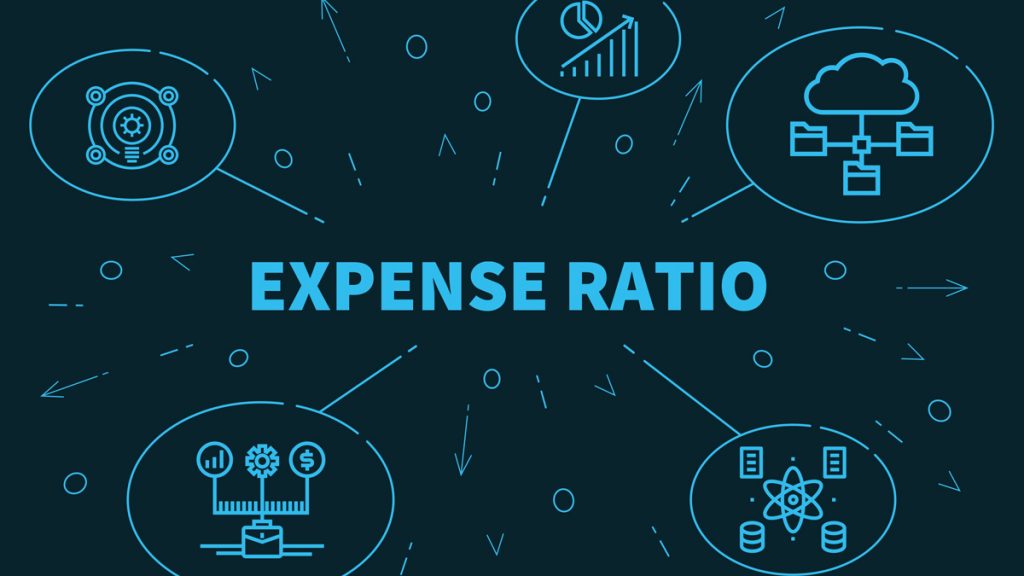Finances
What is expense ratio for mutual fund: a 101 guide
When looking at potential investments, it's essential to consider more than just the yield. The expense ratio is also a critical factor to look at, as it can significantly impact your returns. So, check this article to understand what is an expanse ratio.
Advertisement
Expense ratio in a mutual fund: learn everything about it!

If you’re not familiar with the term “expense ratio” and wants to know what is expense ratio for mutual fund, we can help. Basically, it refers to the percentage of an asset used to cover its operating expenses. In other words, it’s the amount that you as an investor pay each year to keep the fund running.
You might wonder why expense ratios matter and whether you should care about them when choosing which funds to invest in. After all, if a fund has high returns, doesn’t that make up for any fees that come out of your investment?
Not necessarily. In this article, we’ll take a closer look at expense ratios and why they should be one of the factors you consider when selecting mutual funds. So read on if you want to learn more about this essential financial term.

What is a hybrid line of credit
Learn everything about this line of credit and how it can improve your finances!
What does the expense ratio mean?

When looking at potential investments, it’s essential to understand all the terms involved. One term you may see is the expense ratio. This financial expression is one of the most important metrics to look at when investing in a mutual fund. Why? Because understanding what this number means can help you make more informed investment decisions.
An expense ratio is the percentage of a mutual fund’s assets used to pay management and administrative expenses. These costs include everything from marketing and accounting to custodial fees.
One fundamental note about expense ratios is that you will not get a bill for them. Meaning when you acquire a new fund, the percentage is automatically deducted from your returns. So when you check on your net asset value or ETF, the fund’s expense ratio is already merged into the number you see.
You will be redirected to another website
You’ll receive messages for less than 1 week, with a maximum of 1 message per day. You can unsubscribe anytime by replying STOP. By submitting this form, I confirm that I am 18+ years old and agree to the Privacy Policy and Terms and Conditions. I also provide my signature, giving express consent to receive informational messages via automated emails, SMS, MMS text messages, and other forms of communication. Message frequency may vary as part of our good-faith effort to respond to your inquiry. Message and data rates may apply. Text STOP to cancel. I understand that my consent to receive communications is not a condition of purchase and that I may revoke my consent at any time.
How much is the expanse ratio?
But how do you figure out how much it was charged? The expense ratio can be expressed in either term of dollars or as a percentage of the fund’s net asset value (NAV). For example, if a fund has an expense ratio of 1.5%, that means that for every $100 invested, $1.50 will be used to cover annual expenses.
The number can vary significantly from one fund to another, so it’s important to compare ratios before making a decision. That is because it affects how much money you’ll make – or lose – over time. A high expense ratio can significantly reduce your profits, so it’s something to consider when deciding where to invest your money.
In general, funds with lower expense ratios are better than those with higher ratios. However, it’s important to note that other factors – such as the quality of the fund’s holdings – are also important when choosing a fund. So even if you don’t base your investments solely on the expense ratio, it’s still definitely something to keep in mind when comparing different funds.
Find out what is a good expense ratio for a mutual fund.

Luckily for investors, expense ratios have been decreasing for many years because of all the competition in this particular market. Over time, a lower ratio could save you a lot of money. But, how do you know what a reasonable expense ratio for a mutual fund is?
Several factors can impact whether a ratio is considered high or low. But, an acceptable range for a mutual fund’s expense depends primarily on its strategy, meaning if it’s an active or passive fund.
For an active fund, a reasonable expense ratio should be between 0.40% for a domestic bond to 1.0% for an international one. Since passive funds only mirror an index and rarely need changes in their selection, their costs should be minimal. Therefore, an expense ratio for these kinds of funds should range between 0.05% and 0.20%.
Expenses vary significantly between types of funds. The category and investment strategy can also affect the expense ratio since they have a smaller amount to cover costs with each investment made.
For example, international stock markets may require staffing from several countries, while large-cap stocks average lower operational expenses at 1,25%. When researching funds, investors should always compare the expense ratios of different investment companies.
That is because a fund’s annual return may be 5%, but if it has higher fees than other similar investments (with average yearly profits around 2%), then 40% will go towards paying those costs instead.
Expense ratio is important: understanding why
To summarize, the expense ratio is an important measure for investors. That’s because it tells them how much they are paying in costs by investing into a specific fund. It also tells them what their potential return is reduced down to. The lower this number, the better since it means that you’re receiving higher returns on your invested capital!
If you’re like most people, you want to keep as much of your hard-earned money as possible. So when it comes to investing, you want to take all the necessary steps to protect it.
Therefore, it’s crucial to understand what goes into a fund’s expense ratio. Then you can make sure you’re investing in those with the lowest ratios possible. By doing so, you can keep more of your money working for you and maximize your investment potential!
And if want to keep learning about finances, check out the following content!

Three types of fees: a guide for beginners
Learn about the three types of fees you need to face when getting a loan.
Trending Topics

Applying for the Aspiration Spend & Save™ card: learn how!
Learn how to apply for the Aspiration Spend & Save™ card. A product that cares for your wallet and the environment just as much.
Keep Reading
Wells Fargo Reflect® Card Review: 0% intro APR & No Annual Fee
Looking for a long 0% APR period? Check out the Wells Fargo Reflect® Card review. Find out its main perks, including no annual fee! Read on!
Keep Reading
Get your money fast: Apply for U.S. Bank Personal Line of Credit
Are you looking for a flexible and affordable line of credit? Then apply for U.S. Bank Personal Line of Credit - up to $25K!
Keep ReadingYou may also like

PenFed Gold Visa® Card full review
Read our PenFed Gold Visa® Card full review and learn how this card works. Pay a $0 annual fee and enjoy Visa benefits! Stick with us!
Keep Reading
Discover Student Loan or Sallie Mae Student Loan: pros and cons
Need help completing your studies? Know about Discover Student Loan or Sallie Mae Student Loan. There are two great options!
Keep Reading
Who can Apply for the Navy Federal HELOC? Answers here!
Read on for a comprehensive guide on how to easily apply for a Navy Federal HELOC within minutes, covering all necessary steps.
Keep Reading